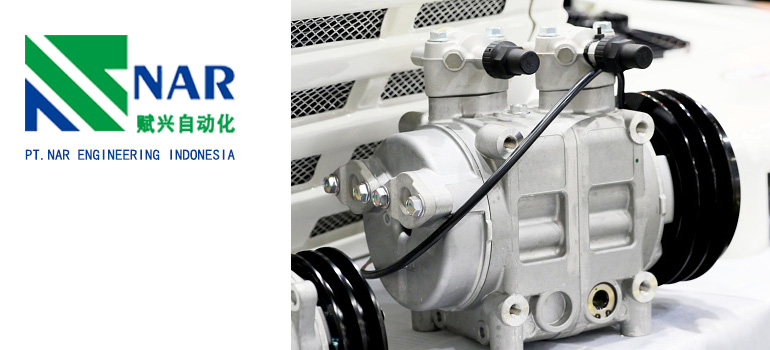A conveyor pulley is a critical component of a conveyor system, playing a crucial role in the movement and transportation of materials. It is a cylindrical device that is used to change the direction of the belt in a conveyor system, facilitating efficient and smooth material handling. Conveyor pulleys come in various types, each designed for specific purposes and industries. Let’s explore some of the common types of conveyor pulleys and their applications in different sectors.
Motorized Pulley
A motorized pulley, also known as a drum motor, combines a motor and a pulley in a compact unit. The motorized pulley system comprises a protective outer metal drum, expertly safeguarding a sealed motor at its core. Its primary purpose is to drive conveyor belts with unparalleled reliability. We take pride in our commitment to superior quality and exceptional customer service, enabling us to deliver these cutting-edge pulley systems to our esteemed partners.
Motorized pulleys find invaluable application in key industries such as mining, cement, quarries, ports, recycling, and demolition. They come in two variants: the flameproof motorized drum pulley, tailor-made for coal, sugar, and similar environments susceptible to dust and gas explosions, with customizable explosion-proof grading to meet specific requirements. And the normal motorized pulley, a space-saving alternative to traditional driving pulleys, perfectly suited for the modern handling systems of diverse industries like mining, ports, power, and quarries.
Bend Pulley
The bend pulley is an optional part of a belt conveyor weighing system that works with a belt speed sensor. It’s like a helpful connector that lets the speed sensor move with the conveyor belt. When installed correctly, the bend pulley slips less than if the speed sensor were put on the head pulley. It’s also easier to install the speed sensor using the bend pulley, which is usually not possible with the tail or snub pulley.
Using a bend pulley also creates more space for the belt scale! The bend pulley is there to change the belt’s direction. It’s usually placed at the tail or vertical take-up equipment to make the belt bend 180°. If it needs to bend 90°, it goes above the take-up equipment.
Tension Pulley
Tension pulleys are the most intricate of the pulleys that let humans and machines function more efficiently. They are components of belt pulley systems and feature at least one wheel, known as a “block,” that may move instead of remaining stationary. This moveable block is skillfully placed within the pulley system to minimise the tension on the belt it is driving.
A basic and frequent variant of a tension pulley may be found in automotive engines, notably in the serpentine belt system. This pulley system’s tension wheel contacts the serpentine belt, which powers the alternator and ensures energy flows to all of the car’s electrical components.
Snub Pulley
Snub pulleys are vital components of conveyor systems and are available in a variety of sizes to meet a variety of requirements. Their primary function is to improve the belt’s grip by increasing the wrap angle and so lowering the pulling effort required. Surprisingly, snub pulleys and bent pulleys are the same thing. They are categorised according to their role on the conveyor belt. They are known as bend pulleys when they shift the direction of the belt, but snub pulleys when they increase the wrap angle. Some conveyors require as much as 8 or 10 pulleys to operate! By raising the belt wrap angle of the drive pulley, a snub pulley improves the traction of the drive pulley.
Wing Pulley
Wing pulleys are typically seen at the tail end of bulk handling systems in lighter and medium-duty conveyor operations. The wing pulley is a strong and reliable pulley design that ensures continuous belt contact at a helix angle. This clever feature is especially beneficial for conveyor systems where loose material tends to gather on the underside of the belt.
Wing pulley effectively redirects material away from harm, using deflectors to guide it to the sides of the conveyor, keeping it clear from the pulley and belt contact surface. Moreover, it promotes a “self-cleaning” effect on the belt. Unlike traditional drum pulleys that trap and circulate material, the wing pulley allows the material to be shed from the belt surface, preventing build-up and potential damage to the belt and pulley.
Magnetic Pulley
Magnetic pulleys are equipped with powerful magnets that attract and remove ferrous metal contaminants from the conveyed materials. They are commonly used in industries such as recycling, waste management, and mining, where the removal of metal impurities is crucial to product quality and equipment protection. Magnetic pulleys effectively separate magnetic materials from non-magnetic ones, preventing equipment damage, extending the lifespan of conveyor belts, and contributing to a safer and more efficient material handling process.
Maybe you are interested in the following : How to clean a conveyor belt?

